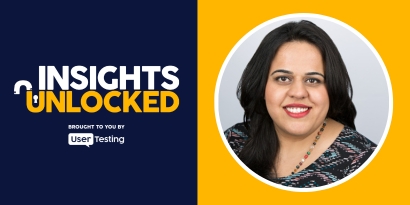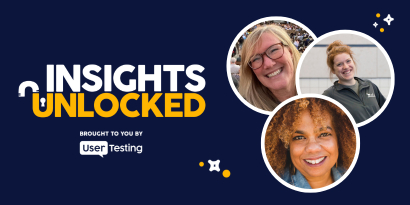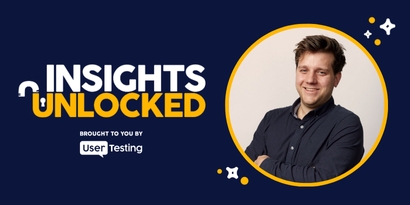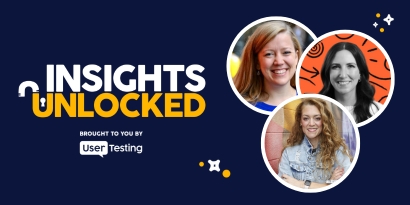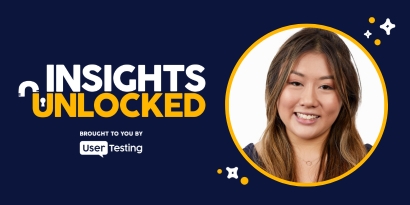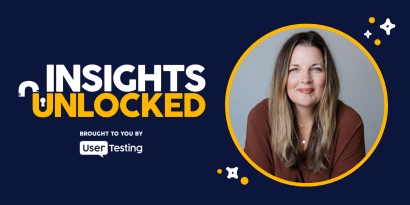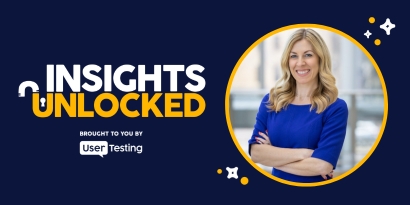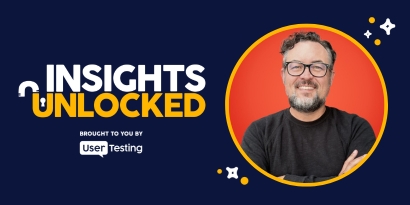
Episode 111 | April 01, 2024
How to succeed as a solo UX designer and product developer in 2024
In this Insights Unlocked episode, UserTesting’s Sean Treiser talks with UX product designer Karla Fernandes about designing, developing, testing and launching products on your own.
How to succeed as a solo UX designer and product developer in 2024
At some point in our UX careers—whether you work for a startup, for yourself, or for a large organization—you will find yourself working on a team of one.
Navigating that journey can present personal and professional challenges, ranging from feeling emotionally isolated to learning and juggling new skill sets.
In this week’s Insights Unlocked episode, UserTesting’s Sean Treiser talks with UI/UX and product designer Karla Fernandes about designing, developing, testing and launching products on your own.
Karla is a digital product designer and mentor based in Lucerne, Switzerland. She has 25 plus years of experience, working with more than 150 organizations including well-known tech startups, education groups, and service-based companies. She speaks four languages, has lived in 11 countries, and launched more than a dozen apps.
Key Takeaways:
- The solo journey in product development: Karla shares her extensive experience working solo on product development, emphasizing self-motivation, focus, and effective time management as key to her success. She underscores the importance of planning and breaking down projects into manageable tasks to stay motivated and focused.
- Embracing No-Code development: Karla delves into the exciting world of no-code app development, explaining how it empowers designers and founders without technical backgrounds to bring their visions to life quickly. She highlights the accessibility and ease of bringing products to market, a game-changer for solopreneurs and startups.
- The essence of customer feedback and analytics: Karla stresses the significance of iterative testing and leveraging analytics to understand customer behavior. She encourages founders and designers to use tools like UserTesting to gather and prioritize insights, ensuring products are developed with real user needs in mind.
- Building inclusive digital products: A focal point of our discussion was the importance of inclusivity in digital product design. Karla passionately spoke about designing with accessibility at the forefront, not as an afterthought, to ensure digital products serve a diverse user base, including those with disabilities.
Three pillars for success as a team of one (UX research, UX design or product development)
Karla shares her top three tips for success in solo product development, emphasizing self-motivation, focus, and time management. She underscores the importance of planning and collaboration, highlighting how these principles guide her approach to crafting compelling user experiences.
- Self-Motivation and Focus: The drive to see projects through from conception to reality.
- Time Management: Using tools and techniques to efficiently allocate time and resources to various project aspects.
- Collaboration: Engaging with teams, customers, and the community to refine and enhance product design and functionality.
“My first tip is self-motivation and focus. And I talk about them together because I believe they really work together,” Karla said. “I find that what motivates me to start a project, either mine or a customer’s, is often that I'm excited to turn it into reality. So for me to maintain focus, I focus on delivery and much, much before the deadline.”
She said her practice is to set her own internal deadlines a week before client deadlines. Then she follows project management best practices, chunking the larger project into bite-sized tasks and setting deadlines.
“If you don't plan it, it's likely that you will struggle to execute,” Karla said. “And since motivation isn't constant, even when you love what you do, it's very important you keep the plan going forward.”
Her second tip is around time management. She recommends using a tool to track how long it takes to do a particular task, whether she is doing UX research, interviewing customers or creating high fidelity designs.
“Then when you have a similar project in the future, you now have a blueprint,” she said, to know how long a task will take. “You have a better understanding of how you work and what amount of time every project needs.”
Her third tip for collaboration. “You can really be a team of one, but you’re never alone, never,” she said. “You need to be with your customer; you need to build with a team. Collaboration is really the key for any product development.”
Collaboration, especially in the research and design of your product, ensures that everyone’s questions get answered, fresh perspectives are considered, biases are minimized, and rework is avoided—leading to quicker success.
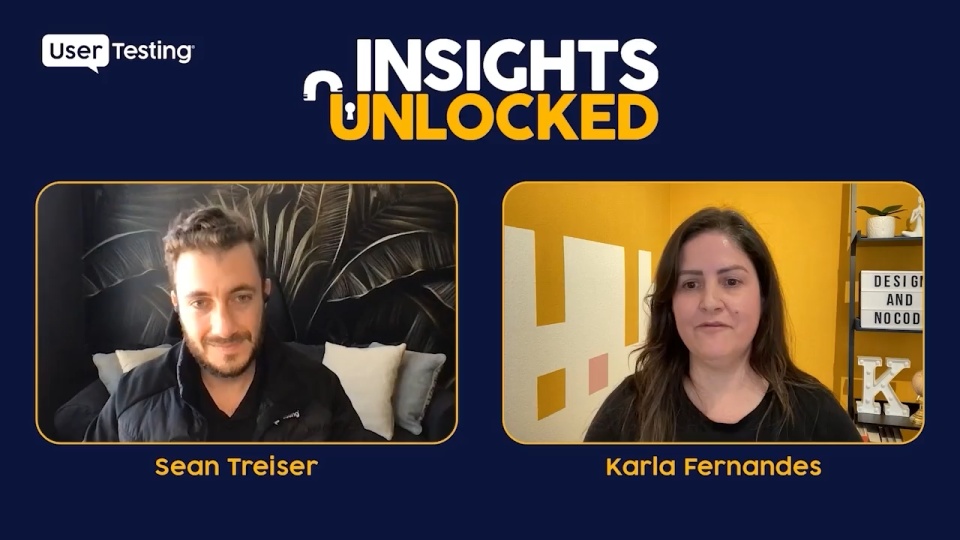
No-Code development insights
Karla has also adopted new technologies and design thinking that allow her to be successful as a team of one. This includes no-code tools that can help get a digital product launched in just a few days or weeks.
"Most of us have been in touch with no code everywhere. We just didn't notice it," Karla said. "As designers, we probably work with Figma every single day, and that's a no-code tool. It's a tool that allows you to do something or to build something or to create something without having you create a line of code or writing code for it."
No-code tools are transforming how products are built, enabling designers and others to implement their visions directly, Karla said. For example, she said, imagine a founder who doesn't have a budget, they don't have researchers, they don't have developers. They just have an idea or vision. And a no-code tool allows them to build a product within a couple of days and begin testing it in the marketplace.
"You are a team of zero," Karla said. "And with this you can see it's much simpler for you to start with no code and test your idea and get it out there."
Inclusive design principles
Karla talks about the need for accessible design. According to the World Health Organization, it is estimated that 1.3 billion people globally experience disability. And this group, along with their friends and family, have a spending power of $13 trillion dollars. Yet many—if not most—digital products are not designed with accessibility in mind.

In the interview, she shares a personal anecdote, where a color-blind colleague had trouble understanding her presentation, that highlights the importance of feedback from individuals with disabilities in refining product designs.
“We need to keep learning about it, and improving, and getting buy-in from key stakeholders,” Karla said. Right now, “it’s like we’re running against time and then in the last step we check things. Let’s reverse that and start with accessibility as question number one.”
She advocates for adopting inclusive design practices that consider all potential users from the outset. Sean agreed.
"I love the idea of incorporating these inclusive design principles upfront, which can empower teams to be proactive about those considerations," Sean said. "I think most of the experiences we see out there now treat accessibility considerations as an afterthought and puts the execution teams in a reactive mode. But the truth is that the best and most universal experiences account for inclusive and diverse perspectives at the very front end of a project and give the most opportunity for anyone to receive value from that product."
The essence of customer feedback
Karla stresses the significance of iterative testing and leveraging analytics to understand customer behavior. She encourages founders and designers to use tools like UserTesting to gather and prioritize insights, ensuring products are developed with real user needs in mind.

Checking in with your customers and prospective customers can be challenging when you're a team of one. It can be difficult to know you're heading in the right direction with product market fit right.
Fortunately, it has never been easier to collect DIY actionable insights from your customers and users.
